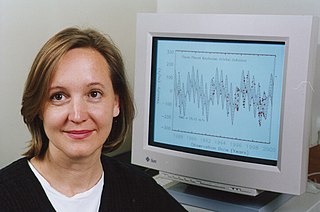Top 32 Quotes & Sayings by Debra Fischer
Explore popular quotes and sayings by an American scientist Debra Fischer.
Last updated on April 21, 2025.
In 1999, my team discovered that the star Upsilon Andromedae was circled by three gas-giant planets - the first distant multiplanet system ever found. That same year, other researchers observed the first 'transit' of an exoplanet - a planet blocking out a small fraction of the starlight as it passes in front of the star.
There's no doubt that the search for planets is motivated by the search for life. Humans are interested in whether or not life evolves on other planets. We'd especially like to find communicating, technological life, and we look around our own solar system, and we see that of all the planets, there's only one that's inhabited.





















